For the most accurate listings, including modes of instruction please visit BuckeyeLink or Classes.osu.edu.
Autumn 2024 Course Offerings

History of Art 2001 ONLINE - Western Art I: Ancient and Medieval Worlds
Professor Karl Whittington
Class # 27537 | ASYNCHRONOUS
This course examines the history of Western Art (architecture, painting and sculpture) from the third millennium BCE through the fifteenth century CE. Rather than a complete “survey” of that period, the course will concentrate its attention on a select group of representative monuments. We will examine not only the monuments themselves, but also the historical context in which they were produced in order to explore their purpose and the way that they functioned. There will be a strong emphasis on visual analysis and understanding how visual forms convey meaning and relate to the viewer. Our goal is to impart not only a body of knowledge but also a set of critical tools, which you should be able to apply to even material not specifically covered in this course.
GEN foundations: Literary, Visual and Performing arts (LVPA) and Historical and Cultural Studies course
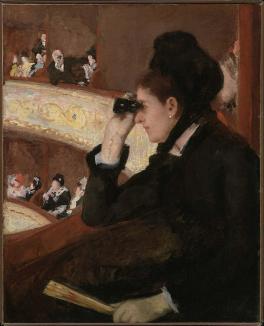
History of Art 2002 - Western Art II: Europe and the United States, Renaissance to Modern
Professor Andrew Shelton
Class # 19587 (+Recitation) | IN PERSON
LECTURE: MON & WED 10:20 - 11:15 | Recitation: FRI 11:30 - 12:25 or 10:20 - 11:15
This course examines the art of Europe and the United States from about 1400 to the present, with an emphasis on developments in painting. Rather than a traditional survey of that period, the course will concentrate on a select group of representative works that shaped—and were shaped by — Western social, political, economic, and intellectual history. There will be a strong emphasis, too, on questions of analysis and interpretation —including, in some cases, the changing history of the artworks’ reception. The goal will be to impart not only a body of knowledge but also a set of critical tools, including visual literacy, that students will be able to apply to a wide range of material not specifically covered in the course.
GEN Foundations: Literary, Visual and Performing Arts (LVPA) and Historical and Cultural studies

History of Art 2003 - The Art & Visual Culture of East Asia
Professor Christina Mathison
Class # 19591 (+Recitation) | IN PERSON
LECTURE: MON & WED 11:30 - 12:25 | Recitation: FRI 10:20 - 11:15 or 11:30 - 12:25
This course offers an introduction to the visual arts in East Asia, from the Neolithic through today. The course examines in particular the relationship between cultural production and changing notions of authority in East Asia in a comparative historical perspective. Case studies will be drawn from China, Korea, Japan, and neighboring regions. Issues examined include: religion and early state formation; courtly culture and monumentality; the development of urban popular culture; the age of empire; art and modernization.
GEN Foundations: Literary, Visual and Performing arts (LVPA) and Historical and Cultural Studies course

History of Art 2901 ONLINE - Introduction to World Cinema
Professor Kris Paulsen
Class # 27497 | ONLINE
FULLY ASYNCHRONOUS
This course will introduce students to the history of film as an artistic medium and a global art form. We will track technological, aesthetic, and formal developments in its evolution from photographic and proto-cinematic technologies to digital cinema by studying particular masterpieces, and focusing on the role of the director or auteur. We will pay close attention to the medium’s complex relationship to time, its changing materiality, and its fraught relationship to truth and reality. Students will engage in a historical and formal study of international cinema through a chronological survey of its major forms, techniques, and its relationship to the broader history of art, as well as social and political history. We will sample its major and “minor” forms, from Hollywood productions to art gallery experiments and cinema from the developing world. Students will be introduced to the grammar of film through a historical account of its formal evolution and the stylistic analysis of the visual and narrative structures of individual films.
GEN Foundations: Literary, Visual and Performing arts (LVPA)
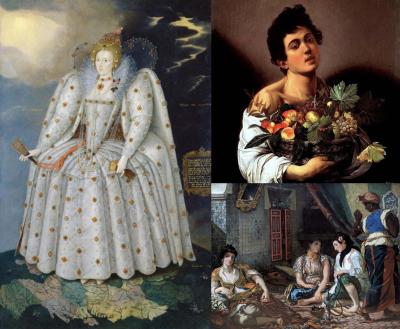
History of Art 3010 HE- Gender and Sexuality in European Art
Professor Karl Whittington
Class #35684 (+Recitation) | IN PERSON
Lecture: MON & WED 9:10 - 10:05 | Recitation: FRI 9:10 - 10:05 (HE), 9:10 - 10:05, or 10:20 - 11:15
This course offers an introduction to the intersectional study of European Art, exploring the intertwining ideologies of gender, sexuality, race, and ethnicity from the Ancient Mediterranean World to the present. We will see that the ways artworks impact and construct ideas and stereotypes about gender, race, and sexuality in the modern world are deeply influenced by their development in premodern history. Topics to be explored include the ways in which ideas about gender roles and identities are shaped by artworks; the gendered contexts of artistic production; gendered practices of viewing works of art; the changing status of female and non-white artists and patrons in Europe; the way people of color were depicted in premodern European art; and queer and transgender artists and artworks. We will investigate the ways in which works of art enforced particular codes of behavior for people of different genders and races, but also how works of art served as sites of resistance to such roles and stereotypes, and as a place where individual identities were negotiated and portrayed. We will explore both famous works of European art and also lesser-known paintings, sculptures, buildings, and objects of visual culture. This course has both a non-honors section and an honors-embedded section; both honors and non-honors students are welcome to register for the course.
GEN Foundations: Literary, Visual, and Performing Arts (LVPA) and Race, Ethnicity, and Gender Diversity (REGD)

History of Art 3050 - Careers In History of Art
Professor Christina Wei-Szu Burke
Class #35999 | IN PERSON
MON 2:20-3:15
In this course, students will be introduced to a wide range of professions that History of Art students go on to after graduation. First, you will have the opportunity to do some analysis of and reflection upon what your personal traits are, and what kind of work you find meaningful. Based on the criteria you develop, you will then be able to size-up the work experiences in a range of different fields that History of Art students enter. We will hear from guest speakers working in a wide range of fields, who will share their experiences on the job market and in their work. We will also explore strategies for identifying and obtaining internships, as well as the details of job seeking, including resume, curriculum vitae and LinkedIn profile preparation, as well as the writing of cover letters, statements of purpose and interviewing for jobs.
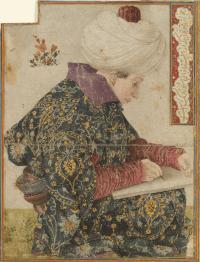
History of Art 3521 - Renaissance Art in Italy
Professor Kristen Adams
Class # 28002 | IN PERSON
MON & WED 3:55 - 5:15
This course offers a panoramic introduction to the greatest artists and masterpieces of the Italian Renaissance from its beginnings in Florence through its triumph in Rome and Venice. After setting the stage with a brief overview of the art of the Late Gothic period in Italy, lectures will trace the nature of the revolutionary changes that transformed painting and sculpture in the 15th and 16th centuries. One major purpose of the course will be to clarify the special characteristics of Renaissance art that continue to have their place with art and artists even today.
GEN Foundations: Literary, Visual, and Performing Arts (LVPA)
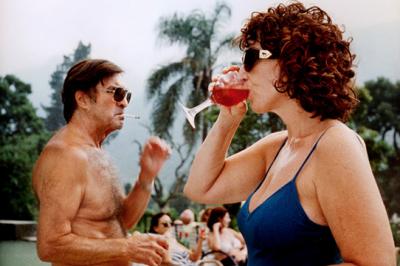
History of Art 3901 - World Cinema Today
Professor Erica Levin
Class # 29480 | ONLINE
FULLY ASYNCHRONOUS
This course will survey the best of world cinema within the past decade or two, including representative examples of national cinemas, such as (potentially, since the selections would change) Iranian, Chinese, Taiwanese, and Indian; ethnic cinemas, such as (potentially) Kurdish, Jewish diaspora, and Quebecois; regional cinemas, such as (potentially) Eastern European and Middle Eastern cinemas; continental cinemas, such as African and South American; global cinema, such as Euro-American, Hong Kong, and Dogme 95; and the cinemas of civilizations, such as Islamic, Judeo-Christian, and Confucian. Not all these categories, or others that are possible, are represented in any given quarter.
GE VPA Diversity and Global Studies, GE Foundations Literary, Visual & Performing Arts
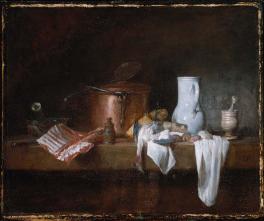
History of Art 4001 - Writing Seminar in History of Art
Professor Lisa Florman
Class # 27496 | IN PERSON
MON & WED 3:55 - 5:15
This course is designed to prepare History of Art majors for advanced work in the field, primarily by focusing on reading and writing as activities fundamental to the discipline. In contrast to some of the other courses you may have taken in the department, the emphasis here will be far less on factual information than on visual analysis and careful, imaginative description. Indeed, we will be putting aside many of the usual questions rightly asked by art historians—about the work’s social and historical context, for example, or its possible autobiographical content—to focus instead on what we might call its “mechanics,” on how the painting (or sculpture) functions visually. The emphasis throughout will be on how works of art reveal themselves to us, and how we as art historians write about that experience.
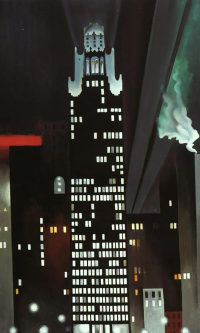
History of Art 4016 - Senior Research Seminar
Professor Jody Patterson
Class # 27515 | IN PERSON
WED & FRI 11:10 - 12:30
The senior research seminar is designed to augment the research and writing skills of History of Art majors. It will investigate aspects of the histories and theories of American Art within a framework sensitive to the varying aesthetic, political, and ideological agendas operating at key historical moments in the cultural formations of the United States. Close attention is given throughout the seminar to the role of institutions and patronage in the production and reception of artworks. The shifting status of American Art within international art-historical narratives will be examined, as will issues around gender, race, and identity.
Initial meetings of the senior research seminar will be focused on the historiography of American Art, in addition to discussions around research methods in preparation for conducting field work. The seminar includes a travel portion over Autumn Break (October 10-12, 2024) that will enable students to view artworks first-hand. This optional (but highly encouraged) part of the class will be fully funded for all enrolled students. Students will be able to visit relevant museums and collections with the course instructor, conduct their own research, and meet with History of Art alumni working in the arts in the city. The final sessions will be devoted to individual student presentations which will then form the foundation for a research paper due at the end of the semester.
History of Art 4030 - Museum Studies Seminar
Instructor Amy Schuessler
Class # 35152 | IN PERSON
MON & WED 12:45 - 2:05
In this course, we will explore, interpret, and evaluate museum, gallery, and curatorial practices as they relate to ethics and aesthetics in contemporary spaces. We will examine the responsibility of art to its publics and our responsibility within the art institution when curating art objects, taking into account how they coalesce to determine an aesthetical, conceptual, or theoretical project. Looking at specific exhibitions, pertinent curatorial essays, and relevant texts that determine an ever-evolving platform, we will seek to decode long-standing conventional museum methodologies to ask ‘why?’ as we delve into ways to ‘think otherwise.’ Throughout the course, we will ask deep questions about the role of the museum, gallery, and art institution as they evolve, devolve, or remain stagnant. Ultimately, by engaging in various projects, we will identify moments in which ethics and aesthetics converge in the domain of curated art spaces.
History of Art 4212 – Egyptian Art and Archeology
Instructor Sarah Schellinger
Class #37281 | IN PERSON
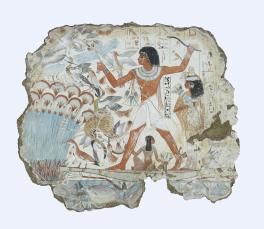
TUE & THUR 3:55 – 5:15 pm
Egyptian art is some of the most iconic from the ancient world. The aim of this course is to provide an overview of the major sites, monuments, and objects throughout ancient Egyptian history, from the Predynastic through the Graeco-Roman periods, that shaped the way the Egyptians visualized their world. At the end of the semester, we will also examine the legacy of Egyptian-style art over the centuries.
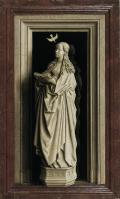
History of Art 4510 - Northern Renaissance Art
Professor Kristen Adams
Class # 55644| IN PERSON
MON & WED 2:20 - 3:40
This course explores the visual culture of northern Europe between about 1380 and 1585. Some works will be examined in great detail in order to consider the kinds of effective visual strategies they employed to engage the viewer and fulfill particular functions; others will be considered primarily as exemplifying types of responses to and engagement with a rapidly changing world. In all cases, the purpose will be to explore the ways that images are constructed to convey meaning and affect the viewer, and to consider how they participate in shaping religious, social, and cultural values and/or constructing individual and community identity.

History of Art 4810 - The Arts of China
Instructor Keyu Yan
Class # 35645| IN PERSON
TUE & THUR 2:20 - 3:40
This course examines the broad range of the arts of China from the Paleolithic period (4000 B.C.E.) to the long twentieth century. Examining the rich traditions of bronzes, painting, calligraphy, sculpture, and architecture, we will consider how the artistic, material, and technical expressed ideas about religion, politics, class, and gender throughout Chinese history. We will chronologically explore such issues as the influence of Confucian on painting, the politics of style, and the changing perception of Chinese national identity.
GEN Foundations: Literary, Visual, and Performing Arts (LVPA)
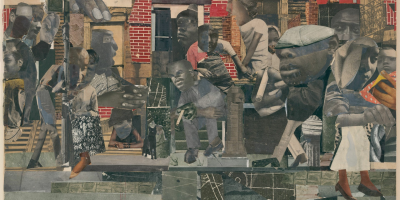
History of Art 4640 - Contemporary Art Since 1945
Professor Sampada Aranke
Class # 35649| IN PERSON
WED & FRI 9:35 - 10:55
This course traces the history of art from the 1950s to the present, examining works in conjunction with the social, political, and philosophical events that inform and are touched by them. Particular attention will be paid to the shifting nature of the art object; the relation between art and the political (broadly defined), artists' engagement with the institutional structures of their production and display, and the shifts in representational practice signaled by postmodernist and postcolonial theories. In all of these arenas, we will think together about how histories get written, artists get celebrated, consistency gets produced, and at what cost. Students should be prepared to discuss and view challenging forms of representational and abstract art, including (but not limited to) art that engages the nude/naked body, war, gendered and racial violence, and the performing body. Assignments include: forming a personal canon, take-home midterm, a museum field trip, weekly in-class worksheets, and a final examination.
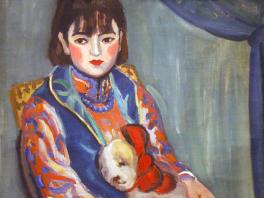
History of Art 4815 - Modern and Contemporary Chinese Art
Professor Christina Mathison
Class # 35651 | IN PERSON
TUE & THUR 11:10 - 12:30
This course will explore the ways in which Chinese artists of the 20th and early 21st centuries defined modernity and tradition against the complex background of China’s history. A key issue for art of this period is the degree to which Chinese artists have chosen to adopt or adapt Western conventions and the extent to which they have rejected them. Equally legitimate positions have been taken by artists and critics whose work actively opposes the legacy of the past and by those who pursue innovations based upon their particular understandings of the Chinese tradition. By examining artworks in different media, including traditional ink and color painting, oil painting, graphic design, woodblock prints, and recent installation and video art, along with other documentary materials in translation, we will investigate the most compelling of the multiple realities that Chinese artists have constructed for themselves.
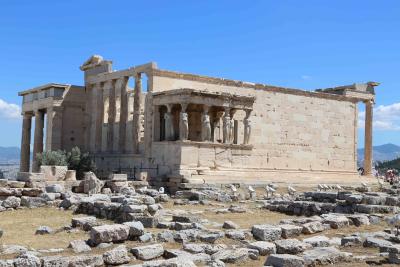
History of Art 5312 - Arts and Archaeology of Ancient Greece
Professor Mark Fullerton
Class # 35652 Undergraduate, # 35653 Graduate | HYBRID
MON & WEDS 9:35- 10:55
This course will explore the art history, archaeology, and material culture of Ancient Greece to the end of the Hellenistic Period (c. 3000-31 BCE. Students will be encouraged both to consider the wide range of disciplines that contribute to the field of Classical Archaeology, including such sources of evidence as material remains, inscriptions, and literature, and to apply the methodologies of art history, archaeology, anthropology, history and philology.
This course is designated as a hybrid course, meaning there is a blending of online readings, videos and assignments with periodic in-class meetings.
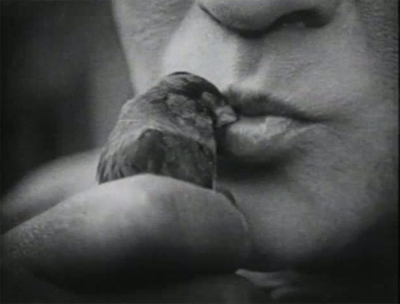
History of Art 5901 - Silent Cinema, 1895-1927
Professor Mark Svede
Class # 35640 Undergraduate, # 35641 Graduate | IN PERSON
TUES & THURS 3:55- 5:15
A survey of the evolution of silent film from its origins as a technological novelty to its fullest realization as an internationally divergent art form. In addition to considering stylistic trajectories, this course will examine the development of viewing habits and expectations, the cultivation and accommodation of diverse audiences, consolidation of a creative industry and its interface with broader economic forces, and the social consequences of cinema’s ascendancy.
Image: Stills from Bed and Sofa (dir. Abram Room, 1927)
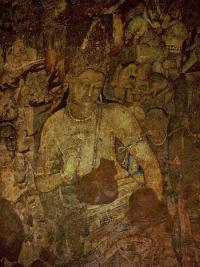
History of Art 6001 - Historical and Conceptual Bases of Art History
Professor Ujaan Ghosh
Class # 34810 | IN PERSON
TUES 2:15- 5:00
The course offers graduate students in the history of Art a familiarity with some of the fundamental methodologies of the discipline. Weekly, we will delve into a series of texts that privilege a particular methodological approach in the analysis of works of art. The intention is to equip you to gain a deeper understanding of how to apply these methods as you embark on your journeys as art historians. The course intends to bolster your abilities as a critical reader and a thoughtful writer. Along with weekly reading and presentations, you will select an object in the first few weeks of the course. Throughout the semester, you will develop a bibliography, a thesis statement, and an original argument. Your final paper will be a chapter/article/conference length presentation which will be an original contribution to the art object you select. The final aim is community building. Since the course is required for first and second year art history graduate students, the course will allow you to foster an intellectual community, and build relationships.
Image by Abdulsayed CC By SA 3.0.
History of Art 8601 - Studies in Modern Art

Professor Kris Paulsen
Class # 29474 | IN PERSON
THURS 2:15- 5:00
Art, Automation, and Creativity: While Machine Learning and other new forms of AI have been at the root of recent union strikes and have provoked much debate and handwringing about the shifting role of humans in (formerly?) creative acts, this course takes a longer on automation and its recursive “attacks” on art making practices. Beginning in the 1700s, we will trace a series of technological events and art practices that have reconfigured how we think about the creative arts and the value of human labor. Beginning with 18th century automata, and moving through moments such as the invention of the Jacquard Loom in 1804 (which led directly to both automated weaving and to modern computing), modernist practices of embracing chance, early computer art, and through to contemporary uses of generative AI, this course will take a historical look at the ways in which technology has repeatedly figured as an existential threat to contemporary notions of what makes us human, and how notions of art, creativity, and labor have shifted in changing technological cultures.
Joseph Racknitz, illustration of von Kempelen’s Turk from Ueber den Schachspieler des Herrn von Kempelen und Dessen Nachbildung (Leipzig and Dresden, 1789), 63. Public Domain.
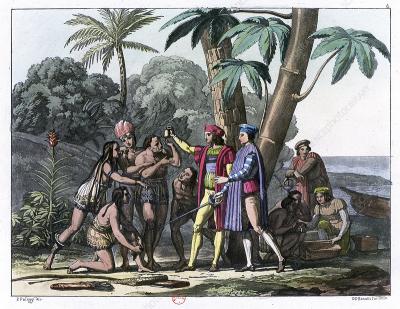
History of Art 8561 - Studies in Latin American Art
Professor Carlos Rivas
Class # 35639 | IN PERSON
WEDS 2:15- 5:00
Early Modern Art History and Cultural Encounter: This graduate seminar will examine a wide range of art historical and cultural studies discourses on the encounter of the “other” in the early modern period, with a focus on how the study of such encounters raises important questions on ethics, positionality, and the very categories of art and modernity. Using a broad range of case-studies, we will examine the ways in which cultural encounter can problematize the modern Western notion of “art” by challenging our understanding of makers, viewers, taxonomies, hierarchies, and the function of art-objects and images as well as our interpretation of them. Through an interdisciplinary approach that is both historical and comparative, this seminar is relevant to students from across the humanities studying material, visual, and cultural history, broadly defined. **This seminar will include a fully funded travel component; students will travel with Prof. Rivas to Los Angeles over Autumn Break to visit museum collections and conduct research related to the themes of the seminar.
